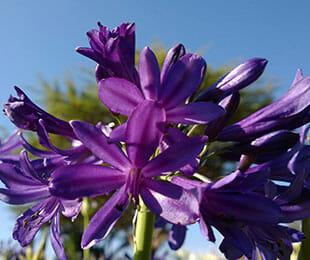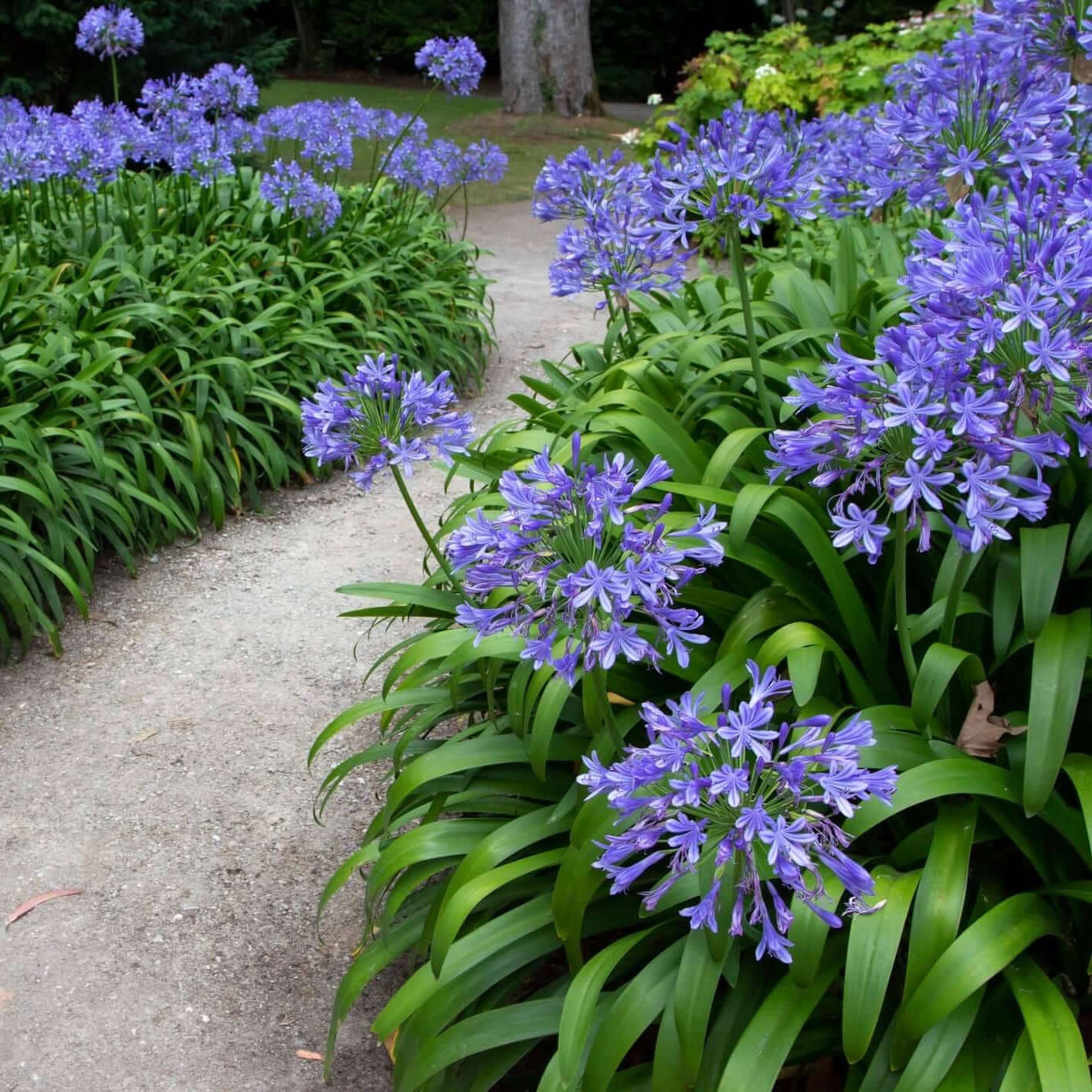Agapanthus Varieties: Choosing the Best for Your Landscape
Agapanthus Varieties: Choosing the Best for Your Landscape
Blog Article
Grasping the Art of Agapanthus Treatment: Vital Steps for Healthy And Balanced Development and Dynamic Blossoms
In the world of gardening, the farming of agapanthus stands as a rewarding endeavor for those that seek to nurture these sophisticated flowering plants. With their striking blooms and elegant vegetation, agapanthus has caught the focus of gardeners worldwide. Nevertheless, attaining optimal growth and vibrant blooms calls for a nuanced technique that encompasses different necessary steps. From picking the appropriate variety to mastering trimming methods, the journey towards cultivating growing agapanthus plants is multifaceted and holds the crucial to opening the full capacity of these organic treasures.

Choosing the Right Agapanthus Selection

When choosing the ideal Agapanthus variety for your garden, think about variables such as environment suitability, bloom shade, and development routine. Agapanthus, frequently referred to as Lily of the Nile or African lily, can be found in a range of colors ranging from tones of blue and purple to white. Select a bloom color that complements your existing garden combination to develop an unified landscape. In addition, consider the climate in your area to make certain the Agapanthus variety you pick can flourish in your particular problems. Some selections are much more tolerant of cool temperature levels, while others choose warmer environments. Recognizing the growth routine of various Agapanthus ranges is essential for proper placement within your yard. Some ranges have a clumping growth behavior, ideal for containers or boundaries, while others have an even more dispersing nature, appropriate for ground cover or mass growings. By meticulously evaluating these factors, you can pick the excellent Agapanthus variety to improve the charm of your garden.
Suitable Growing Conditions
Taking into consideration the optimum ecological requirements is essential for effective Agapanthus growing. Agapanthus plants are delicate to chilly temperatures and should be secured from frost throughout wintertime months.
To guarantee healthy development and lively flowers, plant Agapanthus light bulbs at a depth of about 2-4 inches and room them 8-12 inches apart. Mulching around the base of the plants helps maintain dampness and reduces weed development.
Watering and Feeding Tips
Keeping correct wetness degrees and providing important nutrients are crucial components in the care regimen for Agapanthus plants. When it comes to watering Agapanthus, it is essential to strike an equilibrium. These plants prefer consistently wet soil however are prone to root rot if overwatered.
Feeding Agapanthus is necessary for advertising healthy and balanced growth and prolific flowers. Use a well balanced plant food, such as a 10-10-10 formula, in the early spring as new development emerges. Repeat this application every 6-8 weeks throughout the expanding season. Avoid too much fertilizing, as it can cause rich foliage at the expenditure of blossoms. Constantly comply with the producer's instructions for correct dilution and application approaches. By complying with these watering and fertilizing ideas, you can guarantee your Agapanthus plants prosper and create vibrant, resilient flowers.
Trimming Techniques for Agapanthus
Trimming Agapanthus plants at the suitable times and with correct strategies is important for maintaining their health and promoting optimum growth and flowering. The perfect time to trim Agapanthus remains in late winter months or early spring before brand-new growth arises. Beginning by getting rid of any yellowing or dead fallen leaves near the base of the plant. Cut them as close to the ground as feasible without harming the emerging shoots.
Deadheading spent blossoms can likewise redirect the plant's energy right into producing more blossoms rather than setting seeds. If you want to collect seeds for proliferation, leave some flowers to dry and mature on the plant.
Remember to make use of clean, sharp devices to make accurate cuts and reduce the risk of introducing illness. Agapanthus. Regular pruning will aid maintain your next Agapanthus looking healthy and balanced and cool while making sure a bountiful display of stunning flowers
Taking Care Of Typical Insects and Diseases
After guaranteeing proper trimming methods for Agapanthus, it is necessary to deal with usual parasites and diseases that can impact the wellness and vitality of these plants. Agapanthus plants are generally sturdy however can still come down with particular problems. One usual insect that impacts Agapanthus is the Agapanthus gall midget. This small, orange fly lays its eggs in the foliage, leading to altered growth and blossom buds that stop working to open up. To combat this bug, trim and damage any kind of damaged plant components and think about utilizing insecticidal soap.
Another usual issue is fungal fallen leave place, which presents as dark sores on the fallen leaves. To avoid fungal diseases, make sure good air flow around the plants, avoid overhanging watering, and remove any kind of infected leaves immediately. Additionally, Agapanthus plants can deal with root rot if they are grown in improperly draining soil. To avoid this, plant Agapanthus in well-draining soil and avoid overwatering. By being watchful and taking punctual action against insects and diseases, you can assist your Agapanthus plants thrive and create vivid blooms.

Final Thought
To conclude, understanding the art of agapanthus treatment involves choosing the right selection, supplying ideal planting problems, appropriate watering and fertilizing, suitable trimming strategies, and addressing usual parasites and illness. By following these helpful hints crucial steps, you can guarantee healthy and balanced growth and vivid blooms for your agapanthus plants. Keep in mind to consistently monitor and preserve your plants to promote their overall well-being and durability.
To ensure healthy and balanced growth and lively blooms, plant Agapanthus bulbs at a depth of about 2-4 inches and room them 8-12 inches apart. By adhering to these watering and feeding pointers, you can ensure your Agapanthus plants grow and create vivid, resilient blooms.
One common bug that influences Agapanthus is the Agapanthus gall midget. Additionally, about his Agapanthus plants can experience from root rot if they are planted in badly draining pipes soil. By adhering to these crucial actions, you can make certain healthy and balanced growth and vibrant blooms for your agapanthus plants.
Report this page